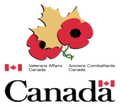Medical Applications — Laundering
Laundering
Posted by Stephen Playford on
Skinsan spec sheets (Updated Aug, 2021) Washing Instructions (Updated Aug, 2021) The Procedure Laundering has often been a problem for medical sheepskins. This was partly related to poor tanning, but also due to hospitals directing skins to inappropriate washing regimes. Until recently, all medical sheepskins were to be laundered at not more than 60'C for a period of eight minutes. This was the maximum safe temperature for repeated washing of the leather. At this temperature and time there was minimal thermal disinfection, so a bacteriostat was required for disinfection. The major problems occurred when skins from infectious wards were included in...
- 0 comment
- Tags: Disinfection, Laundering, Skinsan, Washing
Nursing Home
Posted by Stephen Playford on
From the Nursing Home The new Australian Medical Sheepskins provide enhanced levels of comfort, pressure relief and elimination of moisture for residents with reduced mobility and are a remarkable improvement over sheepskins previously used. The use of Australian Medical Sheepskins has shown that residents are easier to move with less risk to frail skin. There has also been a significant reduction in the incidence of skin tears and pressure areas. The color coding of blue and green for correct laundering and identification for increased urine resistance has been particularly helpful in identifying the specific purpose of these sheepskins. The sheepskins...
- 0 comment
- Tags: Bedsore, Laundering, Nursing
Nursing Perspective
Posted by Stephen Playford on
Color Coding Stops Confusion From a personal perspective, both as a care giver and a patient, true sheepskins have proven invaluable. Confusion exists between genuine and imitation products. Imitation products are often misleadingly called sheepskins. As a result, definite identification is imperative. Prevention of bed sores is essential for the well being and comfort of the ill or the incapacitated. Various methods of assessment can be applied to ascertain the risk of pressure sore development, eg. Norton Scale, Waterlow Scale and/or visual assessment. These take into consideration age, continence, skin type, hydration, mobility and associated medical conditions. The placement of...
- 0 comment
- Tags: Laundering, Nursing, Skinsan








